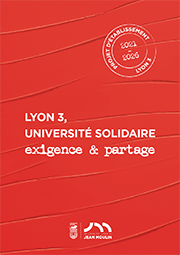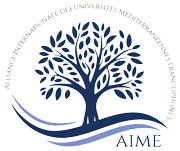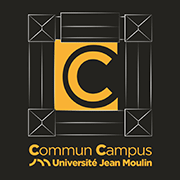AccueilRechercheProgrammes et productions scientifiquesThèsesThèses soutenuesThèses soutenues - 2006-2021Thèses soutenues - 2010
-
Partager cette page
- Recherche,
FLOURY-BUCHALIN Cécile
Le corps malade entre pléthore et corruption : écrits médicaux et religieux au XVIIème siècle
Publié le 19 janvier 2011 – Mis à jour le 19 janvier 2011
Thèse en Sciences sociales - Histoire Soutenue le 11 décembre 2010
Qu’est ce qu’être malade au XVIIe siècle? Pour répondre à cette question, les ouvrages médicaux parus à Lyon au XVIIe siècle (521 éditions répertoriées) mais aussi des ouvrages religieux et plus rarement littéraires ont été soumis à l’analyse (pour ces derniers, des sondages ont été effectués au début et à la fin du siècle et ont rassemblé environ 350 ouvrages parus à Lyon). L’étude des notions de santé et de maladie a servi de prisme à l’analyse des héritages intellectuels et culturels qui se superposent dans la représentation plus générale du corps. La production médicale imprimée à Lyon s’est révélée bien davantage tournée vers la réédition de manuels pratiques et de petit format, porteurs d’une lecture plut?t conservatrice du corps, que vers l’édition plus rare de traités théoriques innovants. La médecine galénique conna?t ainsi une longévité par le biais des rééditions, commentaires et citations mais aussi par le caractère plastique et durable de sa doctrine. Le second trait essentiel de l’analyse tient à la rencontre entre cette lecture médicale du corps héritée de l’antiquité et les normes proposées par la Contre-Réforme : un corps-enveloppe y abrite les quatre humeurs en déséquilibre mais aussi l’?me chrétienne. L’analyse des champs sémantiques et des logiques à l’?uvre dans les ouvrages religieux et médicaux a permis de souligner la congruence des normes qu’ils proposent. Enfin, l’importance des nouveaux savoirs du corps (anatomie, mécanisme et chimie) est évaluée (environ un quart des éditions médicales de la fin du siècle) et confrontée à une relative stabilité des analyses étiologiques et des pratiques thérapeutiques, centrées sur l’évacuation.
The sick body between plethora and corruption: 17th century medical and religious writings.
What is being sick in the 17th century? 521 medical editions and around 350 religious (and literary) books printed in Lyon have been analyzed to answer the question. Here, the notions of sickness and health are a prism that shows intellectual and cultural heritage around a larger representation of the human body. Medical production that was printed in Lyon revealed the importance of generally conservative, small and practical medical books, compared to the real rareness of theoretical and innovative treatises. The galenic doctrine lasted until the second half of the century thanks to reprints, commentaries and quotations but even later thanks to the plasticity of its early-modern interpretation. The second part of the study shows the encounter between this medical view of the body, inherited from Antiquity, and the norms of Counter-Reformation. The physical envelope shelters the imbalance of the four humors but also the Christian soul. Semantic fields and logics at work in religious and medical treatises were analyzed to show the congruence between the religious and the medical norms of the early-modern period. Finally, the new knowledge of the body (anatomy, mechanism and chemistry) is estimated at the quarter of the printed production at the end of the century. It contrasts with the relative stability of etiology still based on the ideas of corruption and guilt, and of therapeutics still focused on evacuation.
Mots clés : 1 Histoire, 2 Corps, 3 Livre, 4 Médecine, 5 Santé, 6 Maladie, 7 Religion, 8 Contre-Réforme
Key words : 1 History, 2 Body, 3 Book, 4 Medicine, 5 Health, 6 Sickness, 7 Religion, 8 Counter-Reformation
Directeur de thèse : Olivier FAURE
Membres du jury :
Jo?l COSTE, Professeur, Praticien hospitalier, Université Paris Descartes
Colin JONES, Professeur, Université Queen Mary de Londres
Rafael MANDRESSI, chargé de recherche au CNRS - Centre A. Kogré - Paris
Bernard HOURS, Professeur, Université Jean Moulin Lyon 3
Olivier FAURE, Professeur, Université Jean Moulin Lyon 3
Mention : Très Honorable avec les félicitations du jury
Equipe d'accueil : LARHA-RESEA
The sick body between plethora and corruption: 17th century medical and religious writings.
What is being sick in the 17th century? 521 medical editions and around 350 religious (and literary) books printed in Lyon have been analyzed to answer the question. Here, the notions of sickness and health are a prism that shows intellectual and cultural heritage around a larger representation of the human body. Medical production that was printed in Lyon revealed the importance of generally conservative, small and practical medical books, compared to the real rareness of theoretical and innovative treatises. The galenic doctrine lasted until the second half of the century thanks to reprints, commentaries and quotations but even later thanks to the plasticity of its early-modern interpretation. The second part of the study shows the encounter between this medical view of the body, inherited from Antiquity, and the norms of Counter-Reformation. The physical envelope shelters the imbalance of the four humors but also the Christian soul. Semantic fields and logics at work in religious and medical treatises were analyzed to show the congruence between the religious and the medical norms of the early-modern period. Finally, the new knowledge of the body (anatomy, mechanism and chemistry) is estimated at the quarter of the printed production at the end of the century. It contrasts with the relative stability of etiology still based on the ideas of corruption and guilt, and of therapeutics still focused on evacuation.
Mots clés : 1 Histoire, 2 Corps, 3 Livre, 4 Médecine, 5 Santé, 6 Maladie, 7 Religion, 8 Contre-Réforme
Key words : 1 History, 2 Body, 3 Book, 4 Medicine, 5 Health, 6 Sickness, 7 Religion, 8 Counter-Reformation
Directeur de thèse : Olivier FAURE
Membres du jury :
Jo?l COSTE, Professeur, Praticien hospitalier, Université Paris Descartes
Colin JONES, Professeur, Université Queen Mary de Londres
Rafael MANDRESSI, chargé de recherche au CNRS - Centre A. Kogré - Paris
Bernard HOURS, Professeur, Université Jean Moulin Lyon 3
Olivier FAURE, Professeur, Université Jean Moulin Lyon 3
Mention : Très Honorable avec les félicitations du jury
Equipe d'accueil : LARHA-RESEA
Documentation
Mise à jour : 19 janvier 2011







